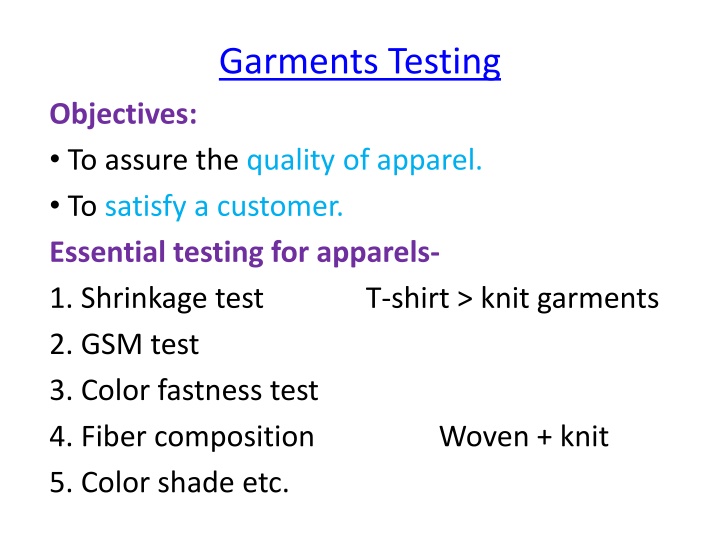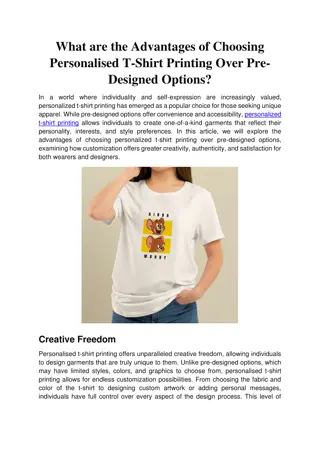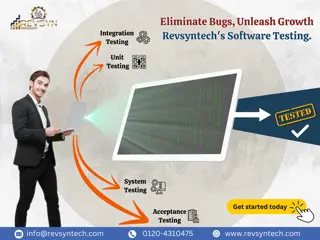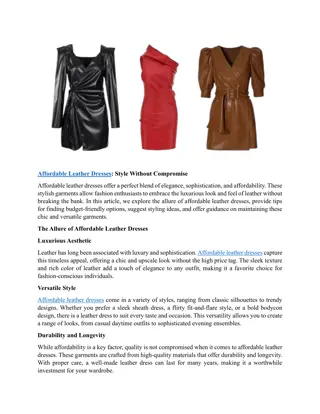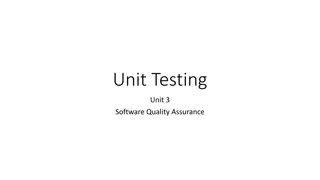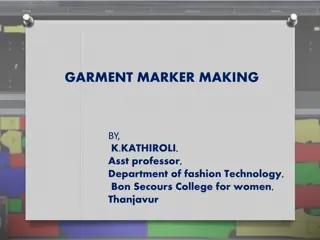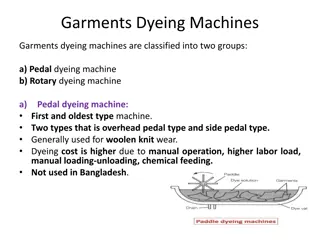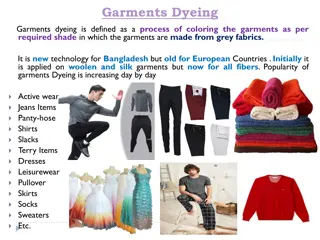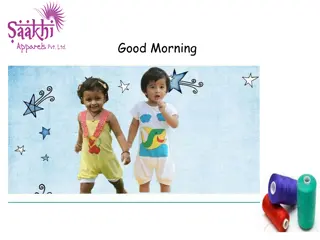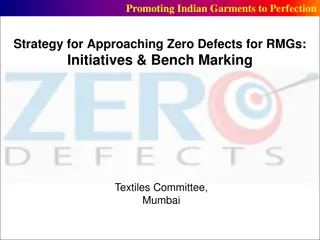Garments Testing
Ensuring apparel quality through essential tests like shrinkage, GSM, color fastness, fiber composition, and color shade evaluation. Detailed procedures for conducting these tests in the garment industry to meet customer satisfaction and quality standards.
Download Presentation

Please find below an Image/Link to download the presentation.
The content on the website is provided AS IS for your information and personal use only. It may not be sold, licensed, or shared on other websites without obtaining consent from the author.If you encounter any issues during the download, it is possible that the publisher has removed the file from their server.
You are allowed to download the files provided on this website for personal or commercial use, subject to the condition that they are used lawfully. All files are the property of their respective owners.
The content on the website is provided AS IS for your information and personal use only. It may not be sold, licensed, or shared on other websites without obtaining consent from the author.
E N D
Presentation Transcript
Garments Testing Objectives: To assure the quality of apparel. To satisfy a customer. Essential testing for apparels- 1. Shrinkage test 2. GSM test 3. Color fastness test 4. Fiber composition 5. Color shade etc. T-shirt > knit garments Woven + knit
Description of Five Essential Tests a) Color shade: Visual appearance of sample. Requirements: 1. Light box 2. Approved sample 3. Garments sample Procedure: 1. At first we should placed the sample inside light box. 2. Approved sample placed on the side of first sample. 3. Then we have to visually compare the color shade. 4. Make comments either it is accepted or not accept.
Continued b) Color fastness: Requirements: 1. Sample preparation * Washing m/c * Dryer * Conditioning, 24 hrs in standard testing lab. 2. Test To do this we need * Light box * Grey scale * Sample (Before wash)
Continued 3. Procedure * Before wash sample and after wash sample placed side by inside light box. * Compare between this two and rating by grey scale. 4. Evaluation: If rating is 5, it means excellent (no change of color) If the rating is 4, it means very good for 3 it is good, for 2 it is Fair and for 1 it is Poor. N.B: Color fastness to light rating 1-8. Blue scale is used for assessment.
Continued c) GSM Requirements: 1. GSM cutter. 2. Rubber board 3. Digital balance Procedure: Placed the sample on rubber board. Put the GSM cutter on the fabric. Press and rotate the GSM cutter to cut fabric. Weight the cut sample on digital balance. d) Fiber composition 1. Burning test 2. Chemical test
Continued d) Shrinkage test: For knit fabric up to 5% shrinkage is internationally accepted and up to 3% shrinkage is internationally accepted for woven fabric. Requirements: Washing m/c, Dryer, Template, Permanent marker, Scale / measuring tape Procedure: Wash the garments / sample according to international standard. Such as ISO, AATCC, BS, etc. Find out the difference between before wash and after wash sample. Calculate shrinkage percentage by using below formula. S% = (LB LA / LB )* 100 Where, S = Shrinkage, LB = before wash length, LA = after wash length.
Required approvals from buyer Physical test properties of the fabric Sample fabric approval Lab dip approval Bulk fabric approval Color continuity approval Product approval Grades approval Pre production sample Accessories approval for color fastness and quality During production sample Folding / packing accessories and method approval
